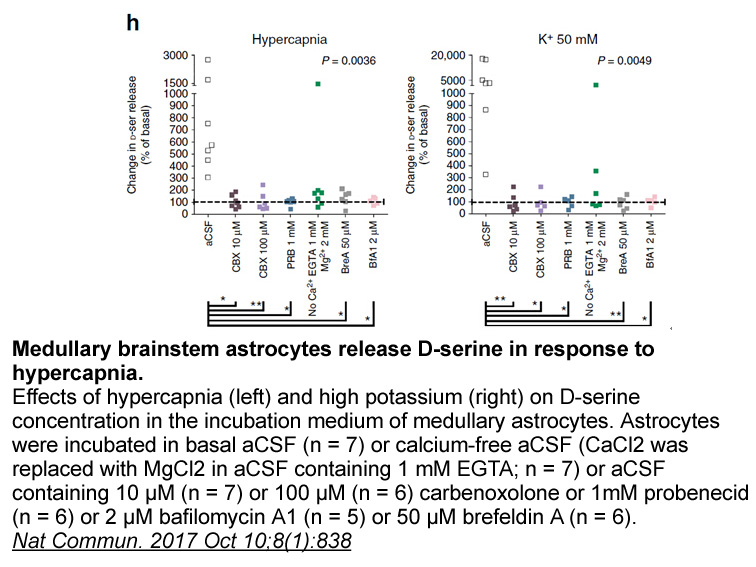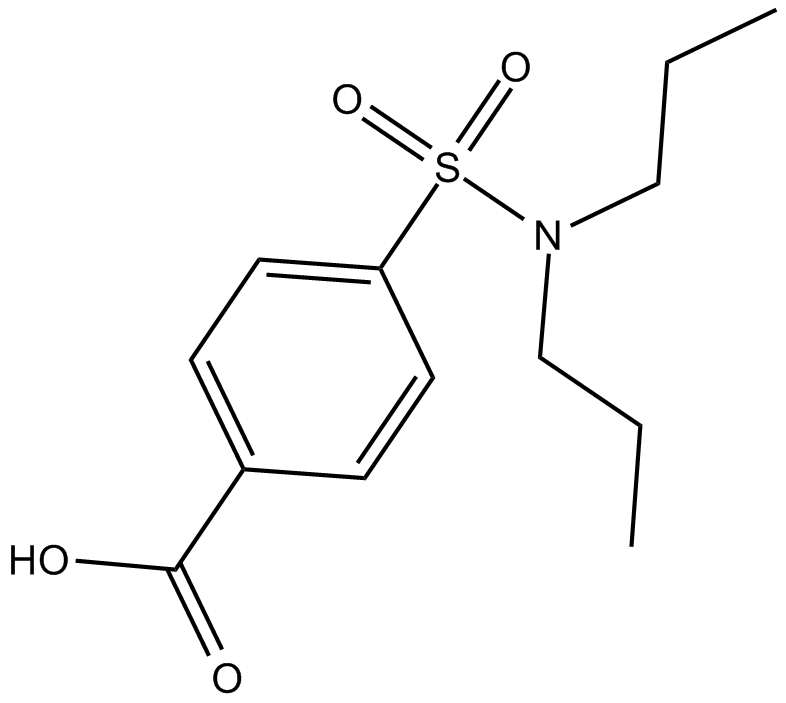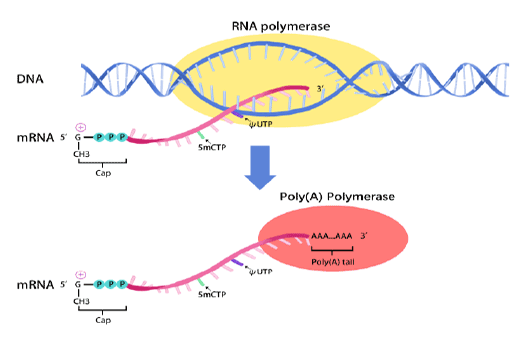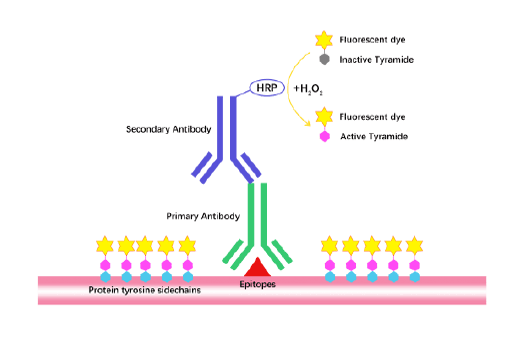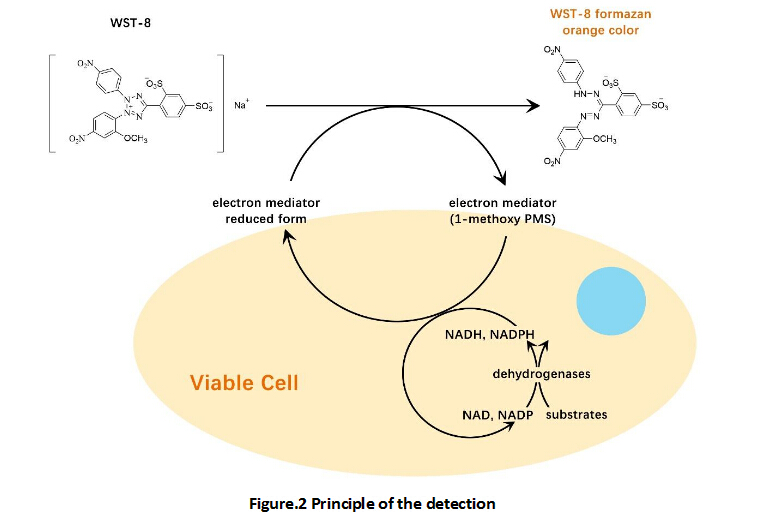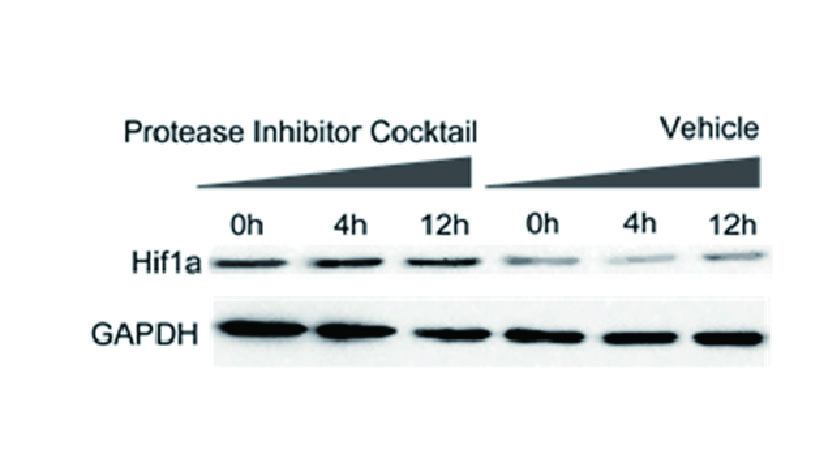Probenecid
Probenecid is an inhibitor of organic anion transport and MRP [1] [2]. Also, probenecid inhibited pannexin-1 channel with IC50 value of 150μM [3].
Multidrug resistance-associated proteins (MRPs) are ATP-binding cassette (ABC) transporters that transport various molecules across cellular membranes and are involved in multi-drug resistance.
Probenecid is an inhibitor of organic anion transport, MRP and pannexin-1 channel. In MRP-overexpressing HL60/AR and H69/AR tumor cell lines, probenecid reversed resistance to daunorubicin (DNR) and vincristine (VCR) in a concentration-dependent way [1]. In wild-type AML-2 cells, probenecid increased the MRP levels in a dose- and time-dependent way. In MRP-overexpressing AML cells, probenecid exhibited a significant chemosensitizing effect. These results suggested that probenecid functioned as an effective chemosensitizer of multidrug resistance (MDR) tumor cells but also an MRP activator [2].
In ischemia/reperfusion (I/R) injury rats, probenecid protected against CA1 neuronal death. Probenecid strengthened the upregulation of Hsp70 and inhibited the expression of calpain-1 and the released of cathepsin B. Also, probenecid inhibited the proliferation of astrocytes and microglia [4].
References:
[1]. Gollapudi S, Kim CH, Tran BN, et al. Probenecid reverses multidrug resistance in multidrug resistance-associated protein-overexpressing HL60/AR and H69/AR cells but not in P-glycoprotein-overexpressing HL60/Tax and P388/ADR cells. Cancer Chemother Pharmacol, 1997, 40(2): 150-158.
[2]. Kim HS, Min YD, Choi CH. Double-edged sword of chemosensitizer: increase of multidrug resistance protein (MRP) in leukemic cells by an MRP inhibitor probenecid. Biochem Biophys Res Commun, 2001, 283(1): 64-71.
[3]. Silverman W, Locovei S, Dahl G. Probenecid, a gout remedy, inhibits pannexin 1 channels. Am J Physiol Cell Physiol, 2008, 295(3): C761-767.
[4]. Wei R, Wang J, Xu Y, et al. Probenecid protects against cerebral ischemia/reperfusion injury by inhibiting lysosomal and inflammatory damage in rats. Neuroscience, 2015, 301: 168-177.
| Physical Appearance | A solid |
| Storage | Store at -20°C |
| M.Wt | 285.36 |
| Cas No. | 57-66-9 |
| Formula | C13H19NO4S |
| Solubility | insoluble in H2O; ≥13.66 mg/mL in EtOH; ≥8.7 mg/mL in DMSO |
| Chemical Name | 4-(dipropylsulfamoyl)benzoic acid |
| SDF | Download SDF |
| Canonical SMILES | CCCN(CCC)S(c(cc1)ccc1C(O)=O)(=O)=O |
| Shipping Condition | Small Molecules with Blue Ice, Modified Nucleotides with Dry Ice. |
| General tips | We do not recommend long-term storage for the solution, please use it up soon. |
| Cell experiment:[1] | |
|
Cell lines |
Wild-type and multidrug resistance protein (MRP)-overexpressing acute myelogenous leukemia (AML) cells, namely AML-2/WT and AML-2/DX100 |
|
Reaction Conditions |
100, 200, 400 and 600 μM probenecid for 6 ~ 48 h incubation |
|
Applications |
Probenecid increased the MRP levels without an increase in MRP mRNA in AML-2/WT in both a time- and dose-dependent manner. Probenecid showed a marked chemosensitizing effect in AML-2/DX100. |
| Animal experiment:[2] | |
|
Animal models |
Male Sprague-Dawley rats subjected to 20-min global cerebral ischemia/reperfusion (I/R) injury |
|
Dosage form |
0.1, 1 or 10 mg/kg (intravenously); 2 mg/kg (intraperitoneally); 5 mg/kg (orally) Administered intravenously, intraperitoneally, or by gavage before or after reperfusion |
|
Applications |
Probenecid via all three routes protected against CA1 neuronal death when given before reperfusion. This protective effect continued when probenecid was given at 2 h after reperfusion, but not at 6 h. Interestingly, the protective effect regained if probenecid was given continuously for 7 days after reperfusion. Probenecid protected against transient global cerebral I/R injury by inhibiting calpain-cathepsin pathway and the inflammatory reaction. |
|
Note |
The technical data provided above is for reference only. |
|
References: 1. Kim HS, Min YD, Choi CH. Double-edged sword of chemosensitizer: increase of multidrug resistance protein (MRP) in leukemic cells by an MRP inhibitor probenecid. Biochemical and Biophysical Research Communications, 2001, 283(1): 64-71. 2. Wei R, Wang J, Xu Y, et al. Probenecid protects against cerebral ischemia/reperfusion injury by inhibiting lysosomal and inflammatory damage in rats. Neuroscience, 2015, 301: 168-177. |
|
Quality Control & MSDS
- View current batch:
Chemical structure
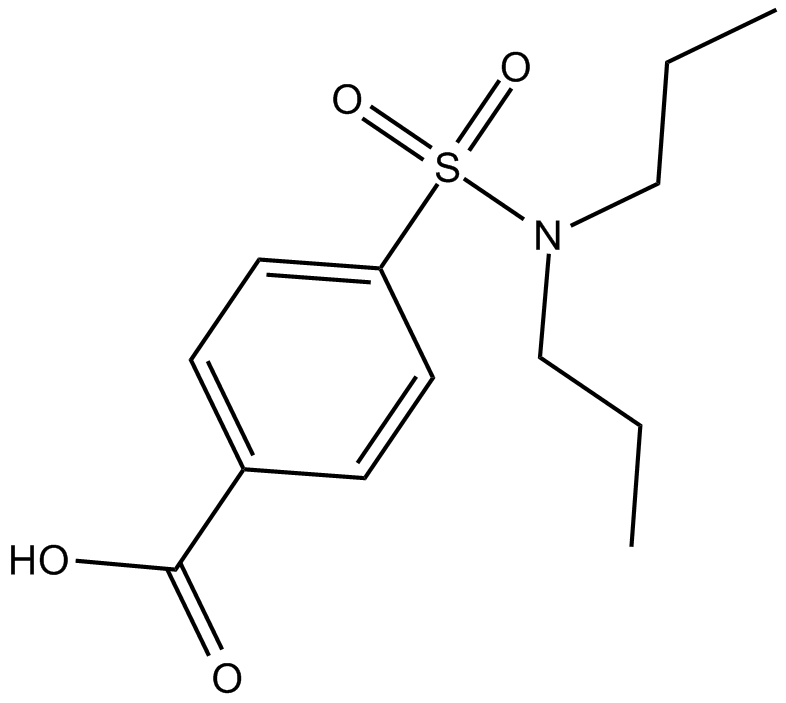
Related Biological Data
